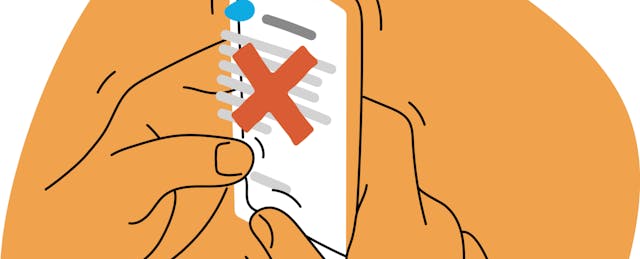Information flies by in our social media feeds, pops into our private messages and invades our inboxes. Sometimes I feel like I can’t even keep up. On more than one occasion, I’ve shared something, then had to walk it back. I know better, and yet I still fail to be a critical consumer of information.
How, then, can we do better when so much is at stake?
In recent months, I’ve started really digging into the how and why of misinformation, disinformation and the nitty-gritty details of being news literate. At first, I felt like I couldn’t get my arms around what to do. It seemed so insurmountable to begin to make inroads in teaching the kids (and, for that matter, the adults) in my life how to rise above the fray, to think before acting and to critically analyze all the inputs.
Honestly, it’s tempting to put my head in the sand. And if I feel this way as an educator and library media specialist who is supposed to be able to lead and guide on topics like this, I can’t imagine how overwhelming it is for someone without a background in information science.
I’ve long followed the words of Joan Baez as a mantra: Action is the antidote to despair. So, when faced with overwhelming feelings about the state of the world with regard to information literacy (or lack thereof), I acted. I dug into podcasts, attended webinars, read books and sought experts. Through this work, several resources rose to the top. These are the organizations, experts and tools that, in my opinion, have a serious chance at helping us teach our children to be news and media literate.
It’s still overwhelming, but at this point, I have a better sense of the how and the why of news literacy. The despair has abated a bit, and I know that to eat this elephant, I have to start with just one bite. I’m hopeful that by sharing what I’ve gleaned, I can help you believe that progress is possible, and that together, we can begin to make a difference.
News Literacy Project
The News Literacy Project, a nonpartisan national education nonprofit, provides programs and resources for educators and the public to teach, learn and share the abilities needed to be smart, active consumers of news and information and equal and engaged participants in a democracy.
John Silva, Senior Director of Education and Training at NLP, points out that “young people have a right to news literacy education” and through teacher training, apps and website projects, NLP delivers a wide array of tools and supports to bring the issue into focus and educate both the teachers and the students.
Their website is a virtual treasure trove of resources, but since information overload is a key problem in this work, I think the best place to start is to participate in one of their webinars (or watch a recording). Silva does a fantastic job of outlining the problem, providing real life examples and guiding our work as educators.
To follow up, I recommend perusing the Educator Resources Library, which offers lesson plans, infographics, posters, quizzes and classroom activities for grades 4 and up. These materials provide ready-made content that supports the professional development offered in the webinar, but that could also be used independently of NLP’s professional development offerings.
One final News Literacy Project resource to mention is Checkology, an interactive platform that provides students with standards-aligned lessons, presented by information experts, including real world examples.
Stanford History Education Group
Stanford History Education Group | Civic Online Reasoning: Based in Stanford's Graduate School of Education, this resource puts a focus on assessing students’ ability to “effectively search for, evaluate and verify social and political information online.”
SHEG’s Civic Online Reasoning Curriculum offers free lesson plans and resources organized into focused collections—introductory information, lateral reading and civic online reasoning in science and history, for example.
They also feature stand-alone video content with the purpose of skill development, real world examples and what they call “crash courses,” which give a solid overview of a broad concept in a series of short videos. The videos are engaging, clever and with just enough quirkiness to keep things interesting.
For those who want to dive deeper, they even share additional research that informs their work.
Fact Vs. Fiction
Jennifer LaGarde (a.k.a. Library Girl) and Darren Hudgins, director of instructional technology at the Organization for Educational Technology and Curriculum (OETC) have co-authored Fact vs. Fiction: Teaching Critical Thinking skills in the Age of Fake News, which provides educators with “tools and resources to help students discern fact from fiction in the information they access not only at school, but on the devices they carry in their pockets and backpacks.”
In addition to authoring this book, LaGarde and Hudgins have also shared many articles via School Library Journal and curated them into a handy Wakelet.
Their work provides a broad overview of the issues, examines information literacy from interesting angles (social emotional learning, for example) and tackles the need for guidance not just for consumers of information, but for our young creators as well.
These resources, News Literacy Project, Stanford History Education Group Civic Online Reasoning Curriculum and the work of LaGarde and Hudgins, as a collective provide a deep and comprehensive look at the issues of news literacy in our classrooms (and the larger world).
Without a doubt, this is the tip of the iceberg of the available content in this area of education, but in my experience, if you have to start eating the elephant, each hand you a fork.


